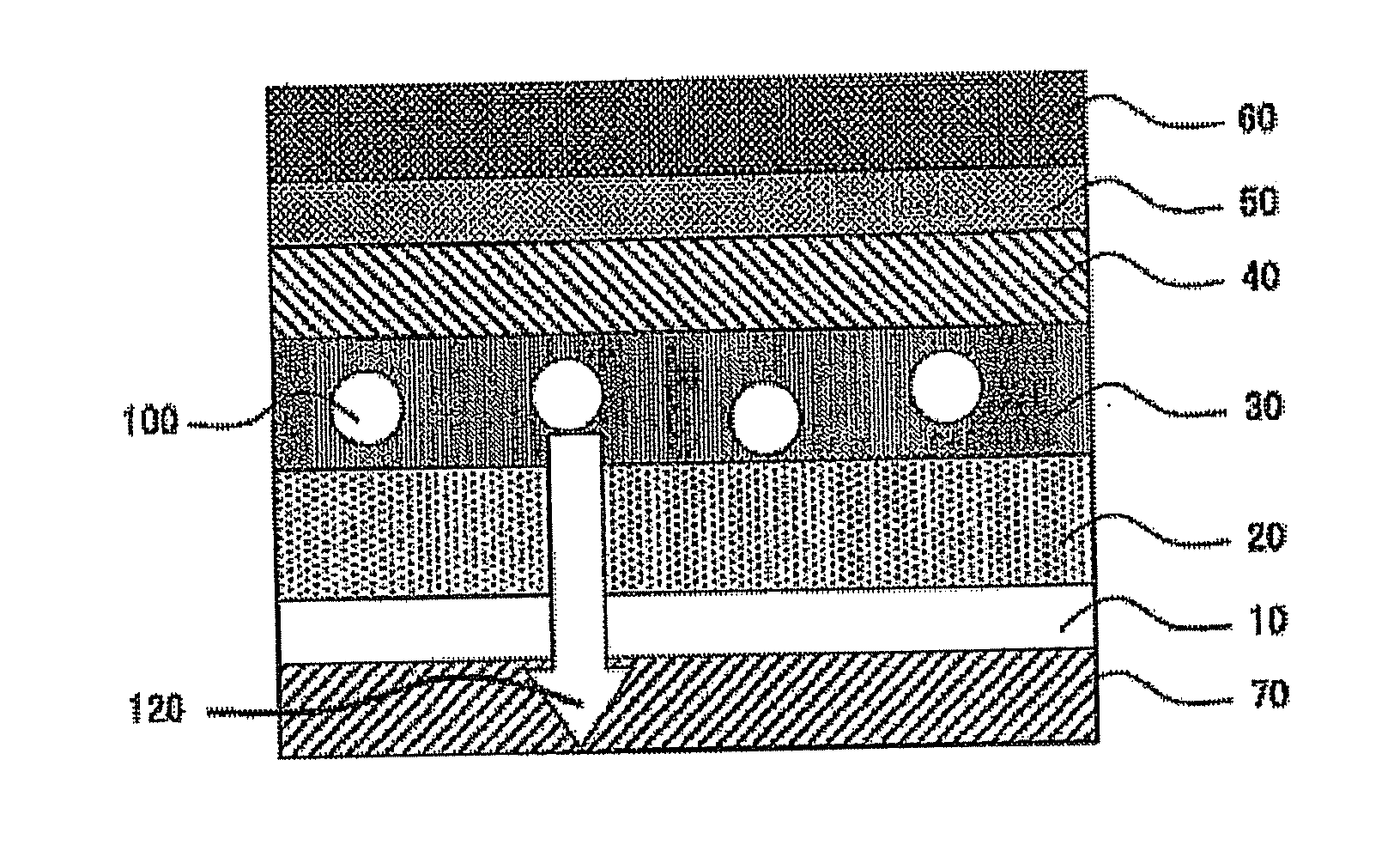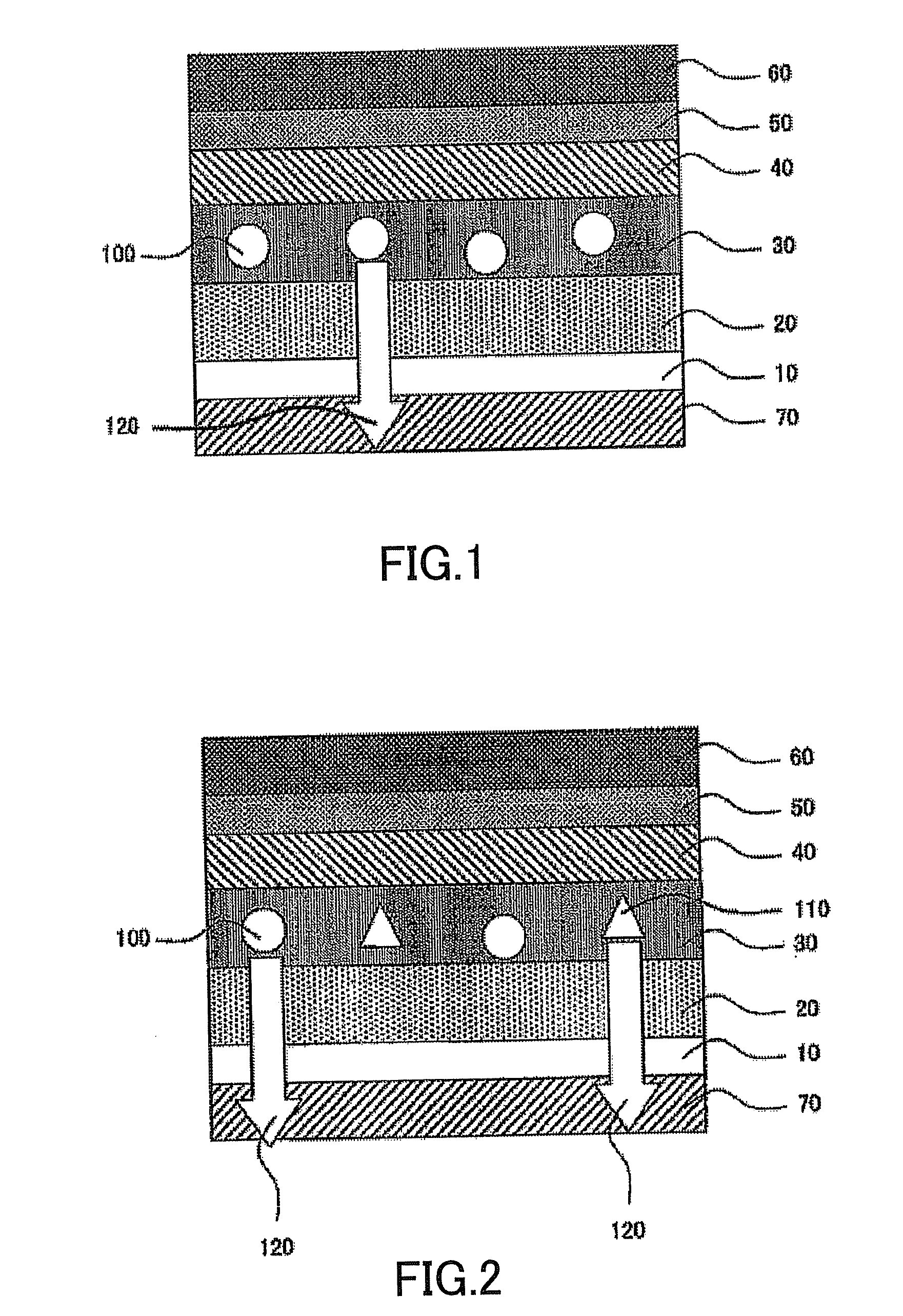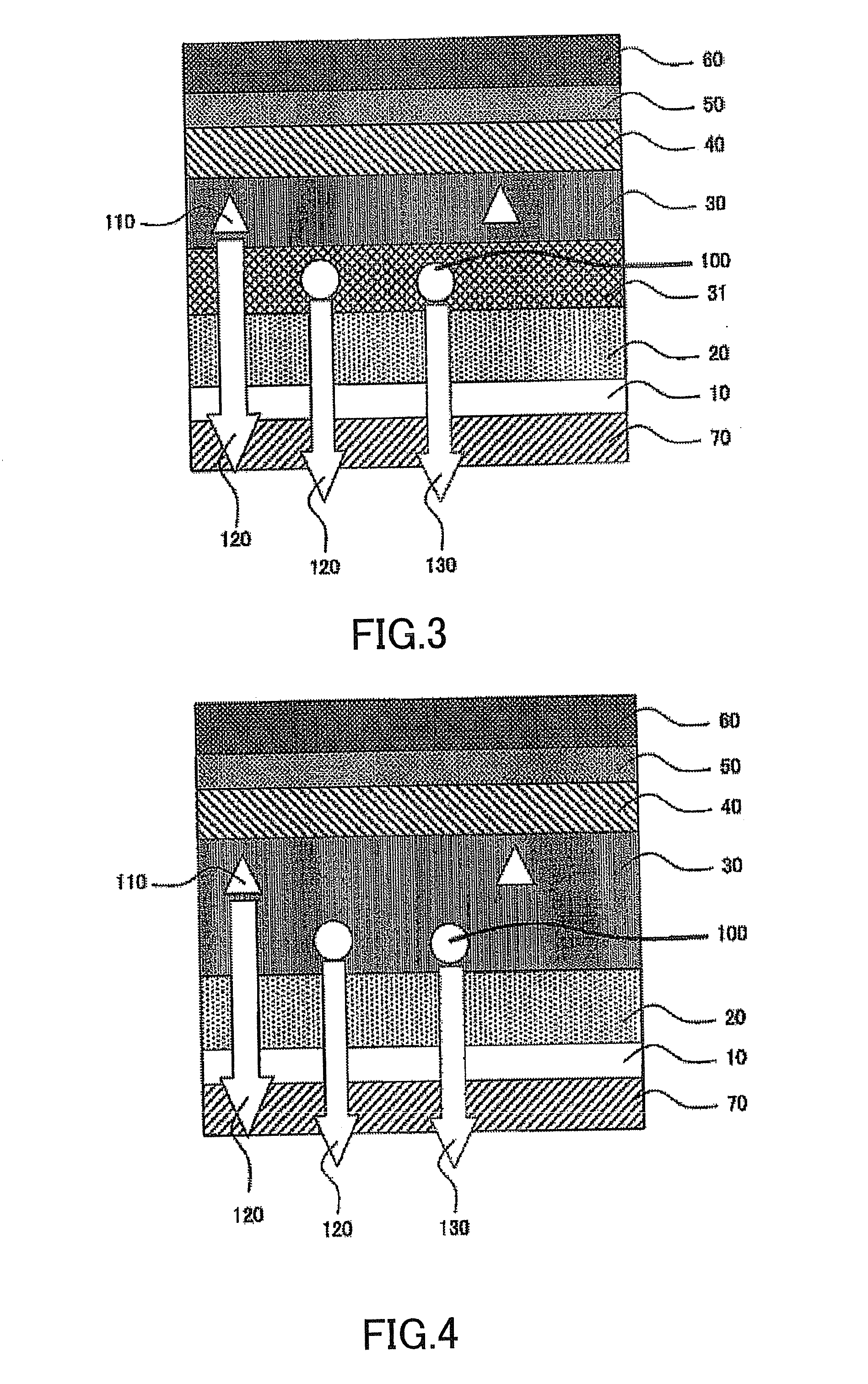Light emitting device
a technology of light-emitting devices and light-emitting layers, which is applied in the direction of solid-state devices, electric lighting sources, and light-emitting sources. it can solve the problems of reducing the luminescence efficiency, affecting the luminescence efficiency, and changing the size of quantum dots, so as to prolong the drive life and prevent the aggregation of qd protected by the protecting material. the effect of the luminescent layer
- Summary
- Abstract
- Description
- Claims
- Application Information
AI Technical Summary
Benefits of technology
Problems solved by technology
Method used
Image
Examples
example 1
[0184]ITO / hole injection layer / hole transport layer / quantum dot-containing luminescent layer / hole block layer / electron transport layer / electron injection layer / cathode
[0185]A transparent anode, a hole injection layer, a hole transport layer, a quantum dot-containing luminescent layer, a hole block layer, an electron transport layer, an electron injection layer, and a cathode were formed and stacked in that order on a glass substrate, and the assembly was finally sealed to produce an organic EL device. All of works except for a transparent anode and a hole injection layer were carried out within a glove box of which the atmosphere was replaced by nitrogen (moisture concentration and oxygen concentration in glove box: not more than 0.1 ppm and not more than 0.1 ppm, respectively).
[0186]At the outset, a thin film (thickness: 150 nm) of indium tin oxide (ITO) was formed as a transparent anode. A glass substrate with ITO (manufactured by Sanyo Vacuum Industries Co., Ltd.) was patterned i...
example 2
[0191]An organic EL device of Example 2 was produced in the same manner as in Example 1 (amount of binder 1:amount of green light emitting QD having a protecting group 2 (weight ratio)=10:3), except that the green light emitting QD constituting the quantum dot-containing luminescent layer was prepared using a material having a protecting group 2 (luminescence wavelength 530 nm, dispersed in toluene) instead of the material having a protecting group 1.
example 3
[0192]An organic EL device of Example 3 was produced in the same manner as in Example 1 (amount of binder 1:amount of green light emitting QD having a protecting group 3 (weight ratio)=10:3), except that the green light emitting QD constituting the quantum dot-containing luminescent layer was prepared using a material having a protecting group 3 (luminescence wavelength 530 nm, dispersed in toluene) instead of the material having a protecting group 1.
PUM
| Property | Measurement | Unit |
|---|---|---|
| thickness | aaaaa | aaaaa |
| luminescent | aaaaa | aaaaa |
| chemical | aaaaa | aaaaa |
Abstract
Description
Claims
Application Information
 Login to View More
Login to View More - R&D
- Intellectual Property
- Life Sciences
- Materials
- Tech Scout
- Unparalleled Data Quality
- Higher Quality Content
- 60% Fewer Hallucinations
Browse by: Latest US Patents, China's latest patents, Technical Efficacy Thesaurus, Application Domain, Technology Topic, Popular Technical Reports.
© 2025 PatSnap. All rights reserved.Legal|Privacy policy|Modern Slavery Act Transparency Statement|Sitemap|About US| Contact US: help@patsnap.com



